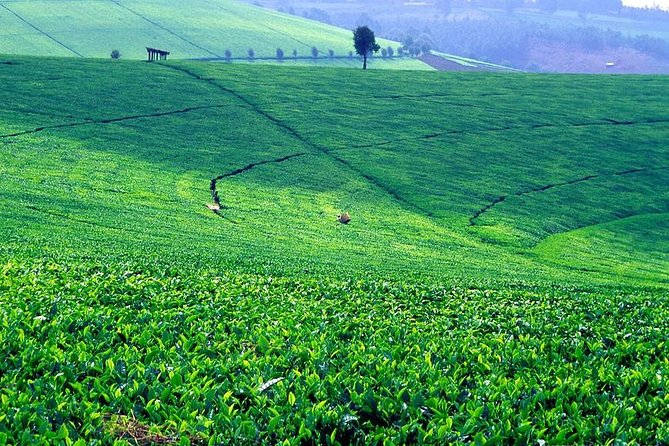Kenya is renowned worldwide for its high-quality tea, which is a significant contributor to the nation’s economy. Remarkably, despite the global trend of large-scale agricultural enterprises dominating the agricultural sector, Kenya’s tea industry is predominantly driven by small-scale farmers. These farmers, who own less than five acres of land on average, produce over 60% of the country’s tea, making them the backbone of the industry. The dominance of small-scale farmers in Kenya’s tea industry is the result of a unique blend of historical, economic, social, and environmental factors. This article explores these factors in depth to provide a comprehensive understanding of why Kenya’s tea industry is led by small-scale farmers.
1. Historical Roots and Colonial Policies
The foundation of Kenya’s tea industry was laid during the British colonial period. Initially, tea was introduced as a commercial crop to be grown on large estates owned by British settlers. However, after independence in 1963, the Kenyan government prioritized the redistribution of land to local populations. This resulted in the fragmentation of large estates into smaller plots, which were allocated to local farmers. The newly independent government also encouraged smallholder tea farming as a means of economic empowerment and poverty alleviation. This historical backdrop set the stage for the rise of small-scale farming in the tea sector.
2. Land Tenure Systems
Land ownership in Kenya is characterized by smallholder plots due to the fragmentation of land over generations. With limited access to large tracts of land, many Kenyan families have turned to intensive farming practices on smaller plots. Tea, being a perennial crop that requires relatively low maintenance once established, became an ideal choice for these small plots. The suitability of tea for small-scale farming has ensured that smallholders remain a dominant force in the industry.
3. Government Support and Policy Interventions
The Kenyan government has played a crucial role in supporting small-scale tea farmers through various policy interventions. One of the most significant initiatives was the establishment of the Kenya Tea Development Agency (KTDA) in 1964. The KTDA was created to manage the cultivation, processing, and marketing of tea produced by small-scale farmers. By providing technical support, access to credit, and a guaranteed market, the KTDA has enabled small-scale farmers to thrive in the tea industry. The agency’s support structure has been pivotal in maintaining the dominance of small-scale farmers in the sector.
4. Cooperative Movements and Collective Action
The cooperative movement in Kenya has been instrumental in empowering small-scale tea farmers. Through cooperatives, farmers can pool resources, share knowledge, and collectively market their tea. This collective action has given small-scale farmers greater bargaining power, enabling them to negotiate better prices and terms with buyers. Cooperatives also provide a platform for farmers to access inputs, such as fertilizers and seedlings, at lower costs, further enhancing their productivity and profitability.
5. Economic Viability of Small-Scale Tea Farming
Tea farming has proven to be economically viable for small-scale farmers due to its relatively low input costs and stable market demand. Unlike other cash crops, tea does not require extensive mechanization or significant capital investment, making it accessible to smallholders with limited financial resources. Additionally, tea bushes can remain productive for several decades, providing a steady source of income for farmers year after year. This economic viability has made tea farming an attractive option for small-scale farmers across Kenya.
6. Environmental Factors and Agroecological Suitability
Kenya’s diverse agroecological zones, particularly in the highland areas, are well-suited for tea cultivation. The country’s rich volcanic soils, favorable rainfall patterns, and moderate temperatures provide optimal conditions for growing high-quality tea. Small-scale farmers, often located in these highland regions, have capitalized on these natural advantages. The adaptability of tea to various microclimates has allowed smallholders to successfully cultivate the crop across different regions, further entrenching their dominance in the industry.
7. Community and Cultural Factors
Tea farming has become deeply embedded in the social and cultural fabric of many Kenyan communities. In regions such as Kericho, Nandi, and Nyeri, tea farming is not just an economic activity but a way of life. Generations of families have been involved in tea farming, passing down knowledge and traditions from one generation to the next. This cultural connection to tea farming has reinforced the commitment of small-scale farmers to the industry, ensuring its continued dominance.
8. Global Market Dynamics
Kenyan tea enjoys a strong reputation in the global market, particularly for its robust flavor and quality. The demand for Kenyan tea has remained consistently high, driven by consumers in countries like the United Kingdom, Pakistan, and Egypt. This strong market demand has provided a stable source of income for small-scale farmers, encouraging them to continue cultivating tea. The ability of small-scale farmers to produce high-quality tea that meets global standards has further cemented their position in the industry.
9. Challenges and Resilience of Small-Scale Farmers
Despite their dominance, small-scale tea farmers in Kenya face numerous challenges, including fluctuating global tea prices, climate change, and rising input costs. However, their resilience and adaptability have enabled them to navigate these challenges. Through innovation, diversification, and continued support from organizations like the KTDA, small-scale farmers have managed to sustain their livelihoods and maintain their crucial role in the industry.
10. The Future of Small-Scale Tea Farming in Kenya
Looking ahead, the future of Kenya’s tea industry will likely continue to be shaped by small-scale farmers. However, to sustain their dominance, these farmers will need to embrace new technologies, diversify their income sources, and adapt to changing climatic conditions. Continued support from the government, NGOs, and the private sector will be essential in ensuring that small-scale farmers remain competitive in the global tea market. As the industry evolves, the resilience and ingenuity of Kenya’s small-scale tea farmers will remain key to the sector’s success.
Conclusion: A Model of Small-Scale Agricultural Success
Kenya’s tea industry is a remarkable example of how small-scale farming can thrive in a globalized economy. The dominance of small-scale farmers in this sector is not merely a reflection of historical and economic factors but also a testament to the strength of community, culture, and collective action. As the industry continues to grow and evolve, the role of small-scale farmers will remain central to Kenya’s success as one of the world’s leading tea producers.





